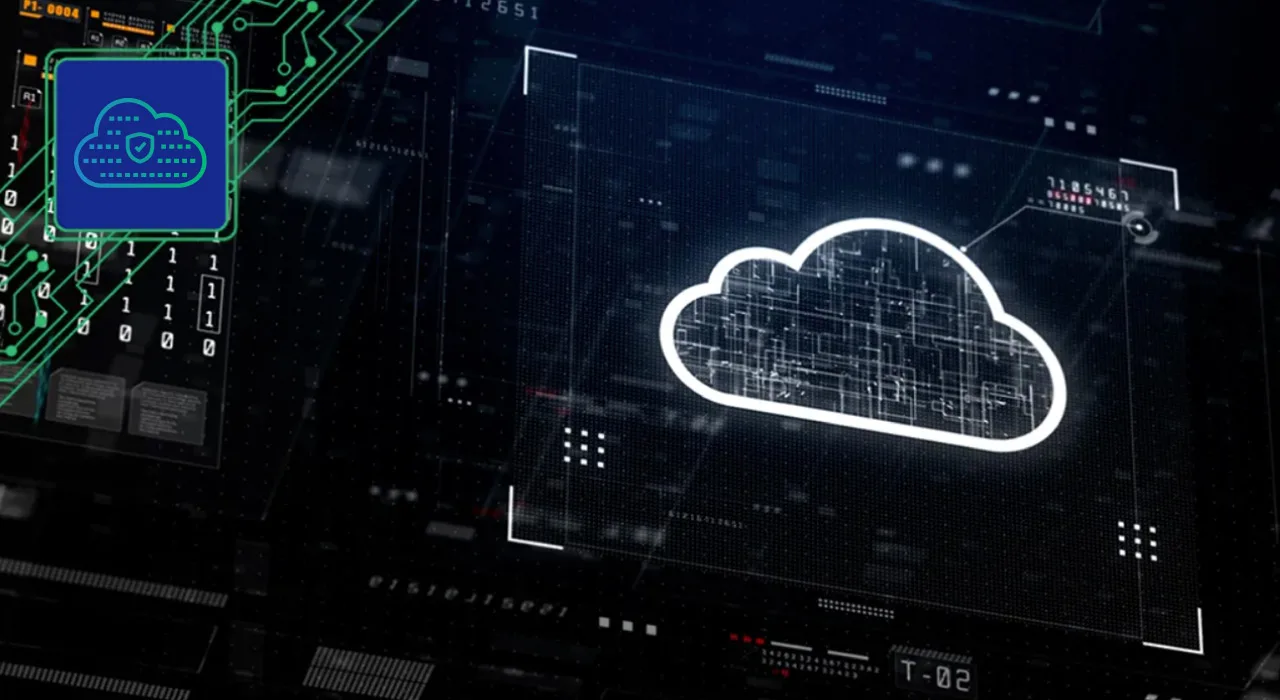Network Security

Network Security
Network security refers to the set of practices, technologies, and policies implemented to protect a computer network infrastructure from unauthorized access, disruption, or misuse. This involves deploying firewalls, intrusion detection/prevention systems, and secure protocols to safeguard data as it travels across the network. Network security also encompasses activities such as access control, encryption, and regular monitoring to detect and respond to potential security threats, ensuring the confidentiality, integrity, and availability of network resources.
AAA Security
AAA Security stands for authentication, authorization, and accounting. It’s a framework that controls user access to network resources. Authentication verifies identity, Authorization grants permissions, and Accounting tracks user activities.
Asymmetric Deployment
Refers to a network setup where security controls are unevenly distributed. This is often done to meet specialized security needs or performance requirements.
Botnet
A network of compromised computers controlled remotely to perform malicious tasks like DDoS attacks or data theft.
Buffer Overflow
A vulnerability where excess data overflows into adjacent memory spaces, potentially leading to unauthorized code execution and system compromise.
Command and Control
Command-and-control servers remotely manage compromised systems, often as part of a botnet. They issue commands and receive data from infected hosts.
Data Center Security
This involves protective measures for safeguarding data centers from both physical and cyber threats, including access control, surveillance, and firewalls.
Data Leakage Prevention
Data leakage prevention tools and policies aim to prevent unauthorized data transfer or exposure, both intentionally and unintentionally, outside of the organization’s network.
Datasheet
A document that provides detailed specifications, features, and capabilities of a cybersecurity product or service, often used for comparison and procurement.
Deploy
To deploy in cybersecurity means to install, configure, and activate software or hardware solutions, integrating them into an existing infrastructure for operational use.
Disaster Recovery
Disaster recovery involves plans and processes for quickly restoring systems and data after a catastrophic event, such as a cyberattack or natural disaster.
DNS Records
Are entries in the Domain Name System that map human-readable domain names to numerical IP addresses, facilitating internet navigation.
Endpoint Device
Any device that connects to a network, such as computers, smartphones, and IoT devices. These are potential entry points for cyber threats.
Firewall Event
A recorded instance where a firewall rule is triggered, either allowing or blocking network traffic based on predefined policies.
Hybrid Data Center
A hybrid data center combines on-premises, private cloud, and public cloud services, requiring integrated security measures to protect diverse environments.
Intrusion Prevention System (IPS)
Monitors network traffic to identify and prevent known and unknown threats, often using signatures and behavioral analysis.
IPsec VPN
An IPsec VPN uses the IPsec protocol suite to establish a secure communication channel over the internet, encrypting data for privacy and integrity.
Latency
In cybersecurity, latency refers to the time delay between a user’s action and a system’s response. Low latency is often crucial in real-time security monitoring.
Malware
Software designed to infiltrate or damage computer systems. Types include viruses, worms, ransomware, and spyware, among others.
Multi-Factor Authentication
Multi-factor authentication (MFA) enhances security by requiring two or more forms of verification before granting access, such as a password and a mobile OTP.
Network Intrusion Prevention System
Also known as NIPS, this system monitors and controls network traffic to prevent unauthorized access and attacks, often using signature-based detection.
Next Generation Firewall (NGFW)
A next generation firewall (NGFW) offers advanced features like application-level inspection, intrusion prevention, and identity-based controls for enhanced security.
NGFW Vs. WAF
This comparison highlights the differences between Next Generation Firewalls and Web Application Firewalls, particularly in the scope and depth of protection they offer. WAF focuses on application layer traffic.
Port Scanning
The practice of probing network ports to identify open services and potential vulnerabilities, often used in security assessments and penetration testing.
SASE
Secure Access Service Edge (SASE) combines network security functions with wide-area networking (WAN) capabilities to support dynamic, secure access to organizational assets.
SIP Proxy
An intermediary server that routes SIP traffic, providing security and performance benefits, such as preventing unauthorized access and reducing latency.
Universal Access Controller
A universal access controller manages authentication and access across various types of network connections, often used in large or complex networks for centralized control.
VPN Client
Software that enables a secure connection to a Virtual Private Network, encrypting data for secure communication over the internet.
Zero-Day Threat
A vulnerability that is unknown to the vendor and unpatched, posing a high risk as there are no specific defenses against it.
Anti-Spam
Anti-spam software filters and blocks unwanted emails to reduce the risk of phishing attacks. It uses algorithms and blacklists to identify spam, helping to keep inboxes clean and secure.
Bare Metal Disaster Recovery
This involves restoring a system directly onto hardware, bypassing the operating system. It is a quick way to recover from system failures, ensuring minimal downtime.
Botnet C&C Protection
This refers to security measures designed to block communication between botnets and their command-and-control servers, disrupting their malicious activities.
Bug
A bug is a software flaw or error that can be exploited to gain unauthorized access or perform unintended actions, requiring patches for resolution.
Connection Flood
A type of DoS attack that overwhelms a network or service by opening an excessive number of connections, rendering it unusable.
Data Flow Diagram
A data flow diagram visually represents how data moves through a system. It’s used in security to identify potential points of vulnerability.
Data Loss Prevention (DLP)
DLP technologies monitor and control data transfers, preventing unauthorized export or leakage of sensitive information from the network.
DDoS (Distributed Denial-of-Service)
DDoS attacks overwhelm a target service or network by flooding it with high volumes of traffic from multiple sources, making it inaccessible to legitimate users.
Device Control
Device control involves managing the access and functionality of hardware devices connected to a network, such as USB drives, to prevent data leaks or malware infection.
Disaster Recovery / Business Continuity
This refers to strategies and plans to ensure that essential business functions continue during and after a disaster, encompassing both recovery and ongoing operations.
Domain Name System
Is the phonebook of the internet, translating human-readable domain names into IP addresses that computers can understand.
Failover
Failover is the automatic switching to a backup system or component in the event of a failure, ensuring uninterrupted service.
Firewall Policy
A set of rules that dictate what kind of network traffic is allowed or blocked, guiding the firewall in making security decisions.
Intelligent Policy Operation
Intelligent policy operation involves automated adjustments to security policies based on real-time analysis, often using machine learning or AI for decision-making.
IP Reputation
A score or rating that indicates the trustworthiness of an IP address, based on its history of malicious or benign activity.
IPv6 (Internet Protocol Version 6)
IPv6 is the latest version of the Internet Protocol, designed to address the limitations of IPv4, such as the availability of IP addresses.
Malicious Traffic
Malicious traffic refers to network traffic involved in cyberattacks or unauthorized activities, often detected and blocked by security solutions.
Management Console
A centralized interface for configuring and monitoring security solutions, often providing dashboards, alerts, and reporting features.
Multi-Homing
Multi-homing involves connecting a network to multiple Internet Service Providers (ISPs) to ensure redundancy and uninterrupted service.
Network Security
Network security involves measures to protect the integrity, confidentiality, and availability of data as it is transmitted across or accessed from network systems.
NGFW Vs. Traditional Firewall
This comparison focuses on the advanced capabilities of NGFWs, such as deep packet inspection and application awareness, as opposed to basic packet filtering in traditional firewalls.
Policy
In cybersecurity, a policy is a set of rules and guidelines that govern how security controls are implemented and maintained within an organization.
Ransomware A type of malware that encrypts files and demands a ransom for their release. It poses a significant threat to data integrity and availability.
SASE Architecture
SASE Architecture refers to the structural design of a SASE solution, often cloud-native and integrating various security services for comprehensive protection.
Secure Application Delivery
This involves the secure transmission and access of applications, often using encryption, authentication, and other security measures to protect against data breaches and attacks.
SIP Proxy Server
See SIP Proxy.
URL Filtering
URL Filtering involves blocking or allowing access to websites based on their URLs, often as part of web security solutions to prevent access to malicious or inappropriate sites.
Web Filtering
Web Filtering controls access to websites based on content categories or specific URLs, often used in corporate environments to enforce acceptable use policies and prevent security risks.
Anti-Virus
Anti-virus software scans for, detects, and removes malicious software. It uses signature-based detection and heuristic analysis to protect against known and unknown threats.
Base Policy
That foundational set of security rules that serve as a starting point for creating customized, more specific policies within an organization.
Bring Your Own Device (BYOD)
BYOD allows employees to use personal devices for work. While convenient, it requires additional security measures like mobile device management to protect corporate data.
Cloud Sandbox
A secure, isolated environment where suspicious code can be safely executed and analyzed, aiding in the detection of advanced threats.
Data Center
A facility that houses computer systems, servers, and networking equipment. It is the backbone of most organizations, requiring robust security measures.
Data Layer Security
Focuses on protecting the data storage and retrieval components in an application, often involving encryption and access controls.
Data Protection
Involves measures to safeguard data from unauthorized access, alteration, or destruction, often involving encryption, backups, and access controls.
Denial of Service
A Denial of Service (DoS) attack aims to make a service or network resource unavailable by overwhelming it with traffic, often through flooding or resource exhaustion.
DevSecOps
DevSecOps integrates security practices into the DevOps pipeline, aiming for continuous security along with continuous integration and deployment.
Distributed Denial of Service (DDoS) Attack:
See DDoS.
Edge Protection
Edge protection involves security measures at the boundary between two networks, often involving firewalls, intrusion detection systems, and data filtering.
Firewall as a Service (FWasS)
A cloud-based solution that provides network security functions, eliminating the need for on-premises hardware.
Firewall Throughput
Measures the capacity of a firewall to handle data passing through it, often cited in Mbps or Gbps, indicating its performance capabilities.
Interactive Mode
Interactive mode in security software allows for real-time user input for decision-making, often prompting the user to allow or block certain activities.
IPsec (Internet Protocol Security)
A suite of protocols used to secure Internet Protocol (IP) communications, often used in VPNs to ensure secure data transmission.
IPv6 Gateway
An IPv6 Gateway is a device that serves as a bridge between IPv6 and IPv4 networks, facilitating communication and data transfer between the two.
Malicious Traffic Detection
This involves the identification and blocking of harmful network traffic, often using intrusion detection systems and firewalls for real-time protection.
Management Server
A management server centralizes the administration of security policies, configurations, and updates, often used in large-scale or distributed environments.
Network Availability Network availability refers to the uptime and reliability of a network, which is crucial for maintaining continuous security services and monitoring.
Network Traffic Management
This involves the control and optimization of data flow across a network, often using load balancers and quality of service settings for efficient resource use.
NGFW Vs. UTM
This comparison discusses the specialization of NGFWs in advanced security features versus the comprehensive, all-in-one approach of Unified Threat Management (UTM) systems.
Policy Enforcement
Policy enforcement involves the active monitoring and application of security policies, ensuring compliance and taking corrective actions when violations occur.
Sandboxing
Sandboxing involves running code or programs in an isolated environment to observe behavior and assess security risks, often used in malware analysis.
Secondary Configuration
A backup set of system or security settings that can be quickly deployed in case the primary configuration fails or is compromised.
SIP (Session Initiation Protocol)
A protocol used for initiating, maintaining, and terminating real-time sessions in IP networks, often used in VoIP services and requiring security measures like SIP proxies.
Twin Mode
Twin mode involves running two devices or systems in parallel for high availability and load balancing, often used in critical environments to ensure uninterrupted service.
UTM
Unified Threat Management (UTM) is an all-in-one security solution that combines multiple features like firewall, antivirus, and intrusion prevention for simplified management.
Wide Area Network
A network that spans a large geographical area, often requiring specialized security measures due to its complexity and scale.

Application Security

Breach Prevention

Cloud Security

Security Operations
CONTACT US
Ready to chat with our experts?
CONTACT US
Ready to chat with our experts?
Like what you see? Looking for a deeper understanding? Or simply, looking to act and secure your enterprise today? Let us know how we can help you and we will connect you to the right person as soon as possible.